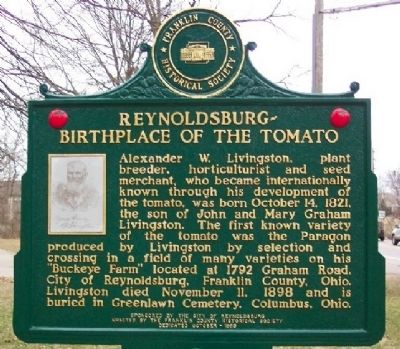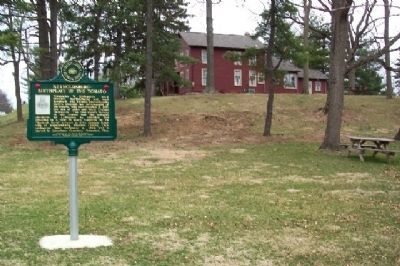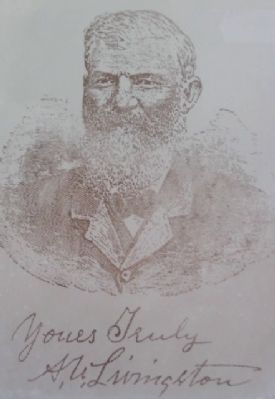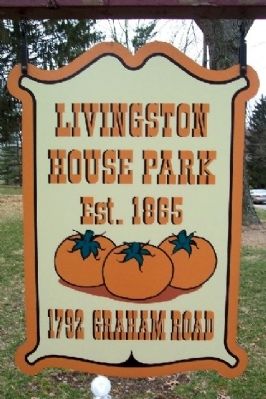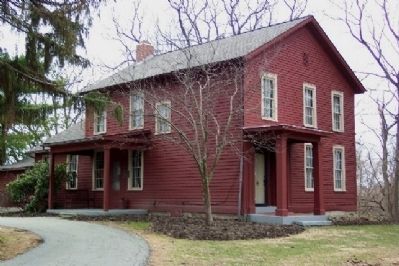Reynoldsburg in Franklin County, Ohio — The American Midwest (Great Lakes)
Reynoldsburg - Birthplace of the Tomato
Inscription.
Alexander W. Livingston, plant breeder, horticulturist and seed merchant, who became internationally known through his development of the tomato, was born October 14, 1821, the son of John and Mary Graham Livingston. The first known variety of the tomato was the Paragon produced by Livingston by selection and crossing in a field of many varieties on his “Buckeye Farm” located at 1792 Graham Road, City of Reynoldsburg, Franklin County, Ohio. Livingston died November 11, 1898 and is buried in Greenlawn Cemetery, Columbus, Ohio.
Erected 1965 by City of Reynoldsburg and The Franklin County Historical Society.
Topics. This historical marker is listed in these topic lists: Agriculture • Horticulture & Forestry. A significant historical year for this entry is 1870.
Location. 39° 56.838′ N, 82° 47.759′ W. Marker is in Reynoldsburg, Ohio, in Franklin County. Marker is on Graham Road, on the right when traveling north. Marker is on the grounds of the Livingston House Park. Touch for map. Marker is at or near this postal address: 1792 Graham Road, Reynoldsburg OH 43068, United States of America. Touch for directions.
Other nearby markers. At least 8 other markers are within 4 miles of this marker, measured as the crow flies. Livingston House (within shouting distance of this marker); Reynoldsburg (approx. 0.6 miles away); Veterans of Foreign Wars Post 9473 War Memorial (approx. 0.6 miles away); Veterans of Foreign Wars Post 9473 Veterans Memorial (approx. 0.7 miles away); Mile Markers (approx. ¾ mile away); Union Veteran Legion Sherman Monument (approx. 2½ miles away); Forest Lawn Veterans Memorial (approx. 3.7 miles away); Francis H. Game Cemetery (approx. 3.9 miles away). Touch for a list and map of all markers in Reynoldsburg.
Also see . . .
1. Father of the Modern Tomato. Heartland Science website entry. Excerpt:
Alexander W. Livingston (1821-1898), a Reynoldsburg, Ohio seedsman, in 1870 developed the first commercially successful variety of tomato. He changed the tomato from an ugly duckling of horticulture (small, ribbed, hard cored, and almost hollow) into the uniform, smooth-skinned, juicy, flavor-packed, meaty beauty that is one of the world’s favorite foods. Livingston and his seed company eventually introduced more than 30 varieties of tomatoes. By 1910, half the major varieties of tomatoes grown in the United States were Livingston products, and he won praise from the U. S. Department of Agriculture.(Submitted on August 22, 2022, by Larry Gertner of New York, New York.)
2. The history of tomatoes: How a tropical became a global crop. 2020 article at the Illinois Extension, Universit of Illinois Urbana-Champaign. Excerpt:
... recent research in genetics indicates that the cherry-sized tomato originated in Ecuador around 80,000 years ago without any human domestication. Humans in South America eventually cultivated these early tomatoes but did not develop the larger fruit size we know today. Over time, these cherry-sized fruits spread northward toward Mesoamerica, either from human movement, by birds, or some combination of natural routes. After the long trek and many, many years of persistence as weedy, semi-domesticated plants, their fruits changed significantly to look much more like the smaller wild tomatoes of South America 80,000 years ago. It was these smaller fruited plants that were then later domesticated in Mesoamerica (around 7,000 years ago) into our modern tomato.(Submitted on May 8, 2023.)
In the 16th and 17th centuries, early seafaring explorers brought the domesticated tomato back to European populations, where it was received with mixed emotions. Many potential plant propagators that had previous knowledge of the nightshade family were familiar with their toxicity, making tomatoes slow to catch on.
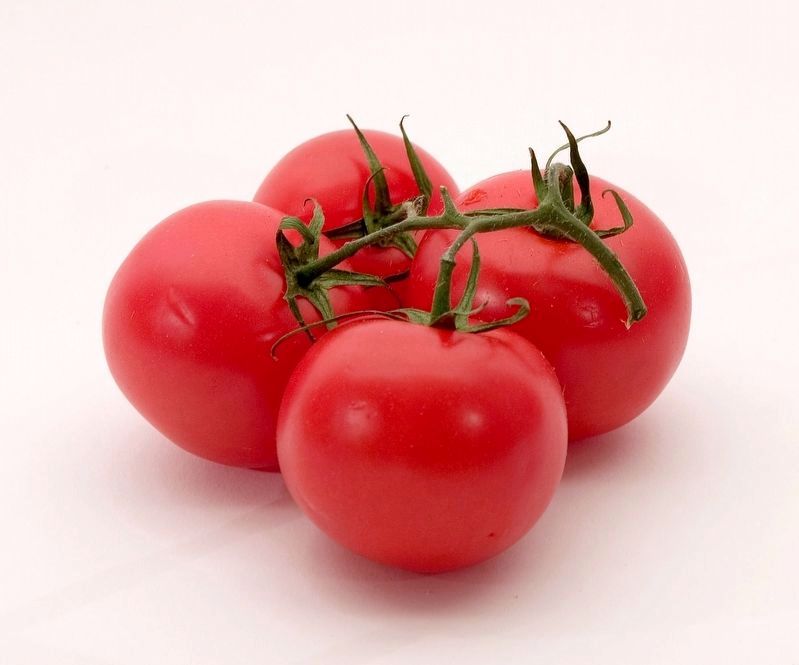
By Softeis (CC BY-SA 3.0) via Wikimedia commons
6. Tomatoes: Edible Berries of the Solanum Lycopersicum Plant
Credits. This page was last revised on May 21, 2023. It was originally submitted on March 28, 2009, by William Fischer, Jr. of Scranton, Pennsylvania. This page has been viewed 2,858 times since then and 225 times this year. It was the Marker of the Week May 7, 2023. Photos: 1, 2, 3, 4, 5. submitted on March 28, 2009, by William Fischer, Jr. of Scranton, Pennsylvania. 6. submitted on April 30, 2023, by J. J. Prats of Powell, Ohio. • Bill Pfingsten was the editor who published this page.
